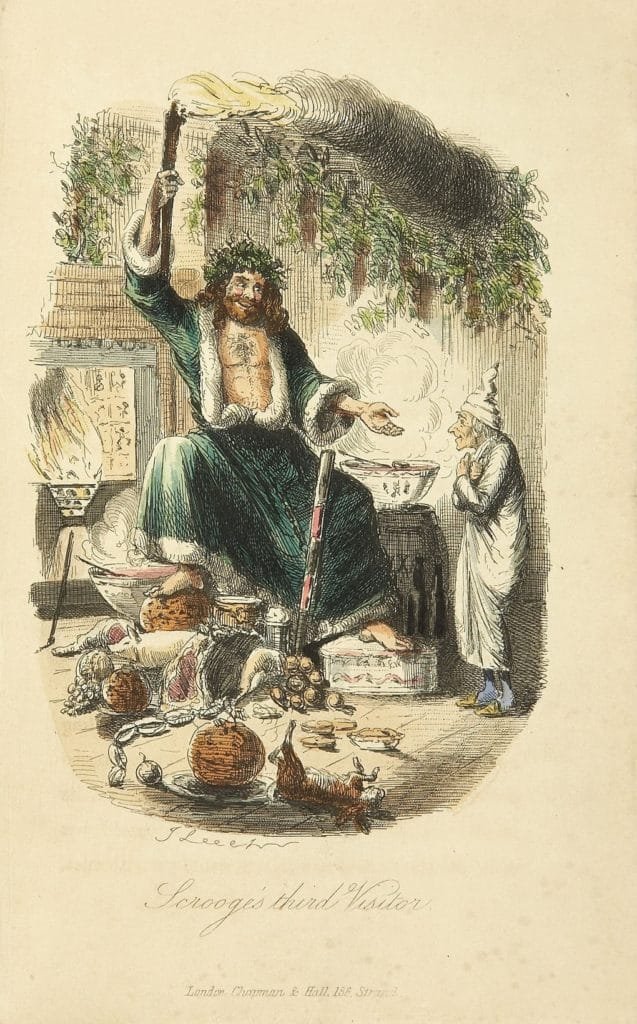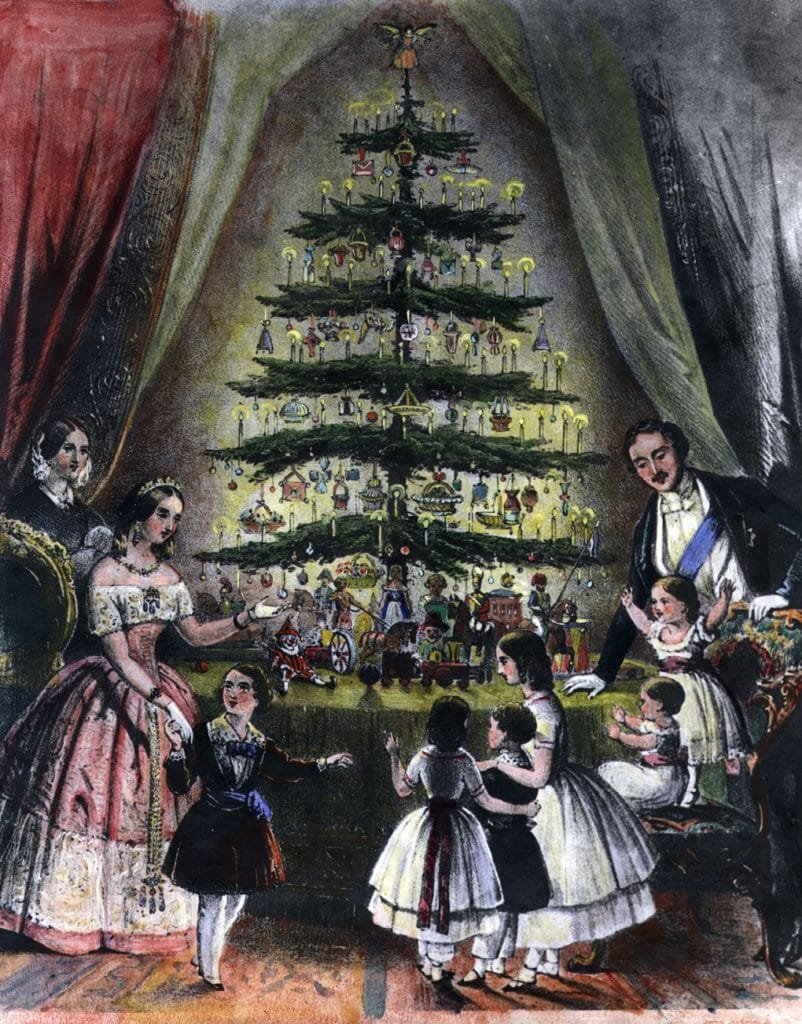
By 1840, Christmas celebrations in Britain were noticeably different to the lengthy festivities that had once defined the season. In fact, few celebrated it at all other than attending church services. But that was about to change, thanks in large part to Charles Dickens and the Royal Household. Their influences would revive Christmas celebrations and instill many of the traditions that we still observe to this day. Read on about the Victorian Christmas.
Christmas Past and Present
The Twelve Days of Christmas are still enshrined in song, and many of us still insist on taking down our Christmas decorations on Twelfth Night, otherwise known as the Eve of Epiphany or January 5. But there was a time when merriment and revelry filled those twelve days. So what had happened to change all of that?
Christmas celebrations had been in something of a decline since the Puritan era. Church leaders were keen to discourage frivolities that had more roots in paganism than in the Bible.
However, the Industrial Revolution was the key factor in changing the way people celebrated Christmas. Society underwent a period of enormous upheaval from the mid-1700s onward, and the effects redefined work life, the family, and entire communities. With the shift from agrarian to industrial, more people moved to cities in search of work. Families and rural communities became more fragmented. Moreover, the emphasis on productivity and profits meant that factories and mills might only shut for one day at Christmas. There was neither enough time nor money for many to return to their family homes, and there was little celebrating. Many could barely afford the cost of day to day life, and one day off from long days in a mill was just enough for a welcome rest. Many of the old festive traditions simply fell out of fashion.
Charles Dickens

Contrary to what a recent film title and numerous other articles have suggested, Charles Dickens did not invent Christmas. He did, however, play a large part in defining what we still recognise as a traditional Christmas. The festive holiday features in a number of his works, including Great Expectations and multiple short stories. But of course the piece for which he is most remembered during this season is A Christmas Carol. Written in just six weeks in 1843, the tale of Ebenezer Scrooge conjures up a clear view of the archetypal Victorian Christmas.
As anyone familiar with his work knows, Dickens was a sentimentalist. He was also a champion of the poor and of the working class. For him, Christmas was a time to recall beloved memories of childhood before poverty and the workhouse took their hold. And although many traditions had died out as old-fashioned, Dickens viewed them as an important ritual. His daughter Mamie would later recall:
Christmas was always a time which in our home was looked forward to with eagerness and delight, and to my father it was a time dearer than any other part of the year. He loved Christmas for its deep significance as well as its joys, and this he demonstrates in every allusion in his writings to the great festival, a day which he considered should be fragrant with the love that we should bear one to another and with the love and reverence of his Savior and Master.

Dickens wrote A Christmas Carol to show the importance of Christmas, not just as a religious holiday, but as a time for dancing, feasting, and merriment. He revived the lost art of caroling, and soon new carols were being written, many of which will be sung in churches across the country this Christmas Eve. But as important as the feasting might be, most of all, it was a time for family. The Cratchits may not have had much money, but they had love for one another and that was what made the day so special. Dickens also used the tale to call for more charity for the poor and the concept of paid holidays for workers. Scrooge complains that he expects Bob Cratchit will expect to receive payment for Christmas Day.
Victoria and Albert
Queen Victoria and the royal household were no strangers to Christmas traditions from the continent. Her mother and her paternal grandmother were both German. Victoria’s paternal grandmother Charlotte of Mecklenberg introduced the German custom of the Christmas tree to Windsor in 1800. As a result, many upper-crust English houses displayed Christmas trees by the 1820s.

However, after Victoria’s marriage to her beloved cousin Albert in 1840, their growing family’s Christmas celebrations were featured annually in many London journals and newspapers. Within a decade or so, everyone wanted to emulate the royals, and the Christmas tree was a feature in homes throughout the country. Oranges, cinnamon sticks, candies, and candles adorned the branches. Prince Albert brought with him other traditions from home, including gingerbread.
In 1841, Victoria wrote in her diary about the joys of Christmas:
Christmas, I always look upon as a most dear happy time, also for Albert, who enjoyed it naturally still more in his happy home, which mine, certainly, as a child, was not. It is a pleasure to have this blessed festival associated with one’s happiest days. The very smell of the Christmas Trees of pleasant memories.
Christmas Dinner
What of the traditional Christmas feast? For the likes of Victoria and Albert, the meal would include with swan, turkey, and all sorts of delicacies. For the Cratchits, a goose would be the result of saving for several months. People could save a few pennies from each pay packet and contribute it to a goose club. At the end of the year, they would have saved enough to enjoy a bird for Christmas dinner, often paying to have it cooked at the local bakers if they did not have an oven themselves. In a reversal of fortunes, goose is now rather extravagant and expensive, while turkey has become much more commonplace on the Christmas table.
One Last Thing…
Neither Dickens nor Victoria and Albert can take credit for the Christmas card, although they did help to popularise the habit. Some early messages date back to the 1600s. However, Sir Henry Cole made them a mainstream form of seasonal greeting. Cole worked in the Post Office and together with an artist friend, he conceived the idea of a greeting card that could be sent via mail and which would be so cheaply available that even everyday working people could send them. The Christmas card was born.

As electronic communications become increasingly popular, the Christmas card seems to be slowly falling out of favour. How will our other Victorian Christmas traditions fare?



One thought on “Reviving Christmas in the Victorian Era”
Comments are closed.